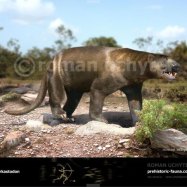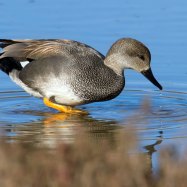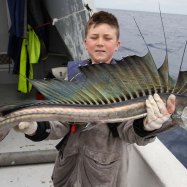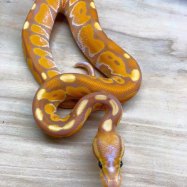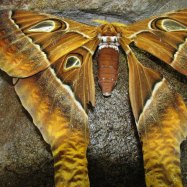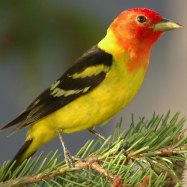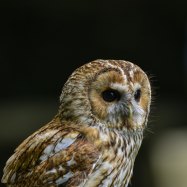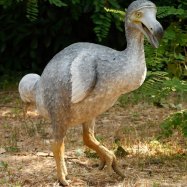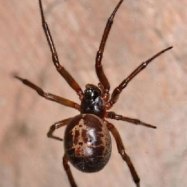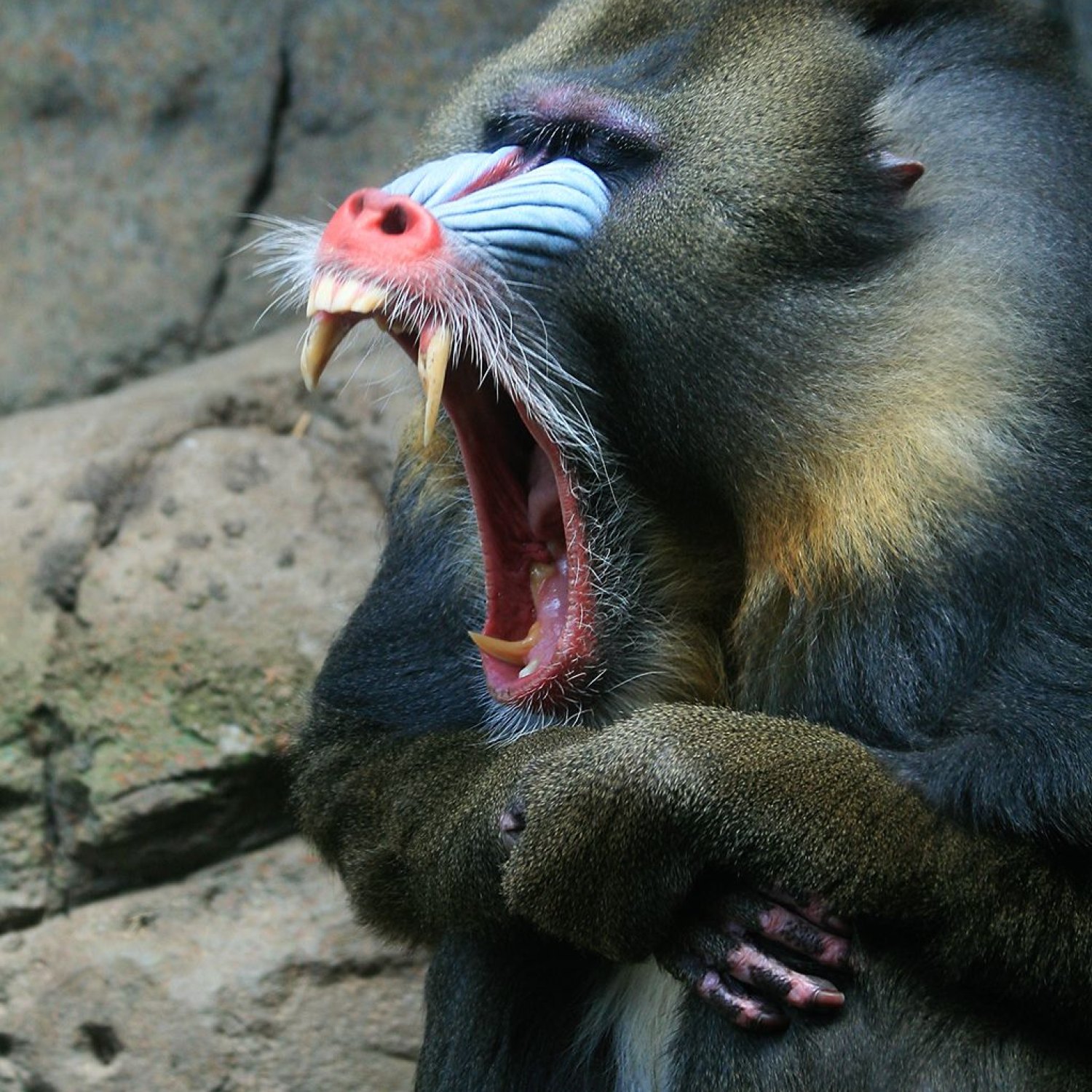
Mandrill
60 to 95 cm (23.6 to 37.4 inches)
Mandrills are colorful, sociable monkeys found in Central and West Africa. With a length of 60 to 95 cm, they are the largest species of monkey in the world. These fascinating creatures are part of the Cercopithecidae family and have a large, stocky body shape. They are known for their striking facial markings, which make them one of the most unique animals in the primate family. Learn more about these amazing animals and their natural habitats by exploring the diverse Central and West African regions.
Animal Details Summary:
Common Name: Mandrill
Kingdom: Animalia
Habitat: Tropical rainforests
The Colorful and Fascinating World of Mandrills
Step into the lush, dense, and vibrant world of the rainforests of Central and West Africa, and you may encounter a creature like no other – the mandrill. With its strikingly colorful face and unique features, this primate is sure to capture your attention and leave you in awe.Scientifically known as Mandrillus sphinx, the mandrill belongs to the animal kingdom, phylum Chordata, and class Mammalia. It is a primate, specifically a member of the family Cercopithecidae, making it a close relative of baboons, macaques, and other Old World monkeys Mandrill.
Mandrills are primarily found in the tropical rainforests of equatorial Africa, including Cameroon, Gabon, Congo, and Equatorial Guinea. They prefer to live in large groups known as troops, consisting of up to 200 individuals. These troops are usually led by a dominant male, with several females and their offspring.
As omnivorous creatures, mandrills have a diverse diet consisting of fruits, nuts, insects, small reptiles, and mammals. Due to the abundance of food sources in the rainforests, they have a varied and flexible diet, allowing them to adapt to changes in their environment. This also makes them an important part of the ecosystem, as they play a vital role in seed dispersal.
The physical characteristics of mandrills are what truly set them apart from other primates. Their coloration is especially remarkable, with bright and bold pigments appearing on their faces and rumps. Their blue and red noses, together with their yellow beards, give them a unique and distinctive appearance Macaroni Penguin. These colors are more pronounced in males, making them easily recognizable and helping them attract potential mates.
Mandrills also have a large and stocky body shape, making them one of the largest monkey species. They can grow up to 60 to 95 cm (23.6 to 37.4 inches) in length and weigh between 20 to 50 kg (44 to 110 lbs). This impressive size allows them to move around efficiently in their forest habitat, using both their arms and legs.
Apart from their visually stunning features, mandrills also possess a keen sense of smell, allowing them to forage and locate food sources quickly. They also have sharp teeth and long canines, which they use for self-defense and to establish dominance within their troops.
Despite their incredible abilities, mandrills still face threats in the wild. Their tropical rainforest habitat is disappearing rapidly due to deforestation, posing a significant danger to their existence. They are also hunted for their meat, which is considered a delicacy in some countries. Additionally, they are vulnerable to diseases, including the Ebola virus, which has devastated mandrill populations in the past.
Fortunately, several conservation efforts are in place to protect and preserve mandrills and their habitat. These include creating protected areas, educating local communities about the importance of these primates, and promoting sustainable practices that help minimize the impact of human activities on their habitat.
In recent years, technology has also played a significant role in monitoring and studying mandrills. Researchers use GPS collars and camera traps to track their movements and observe their behaviors, providing valuable insights into their social dynamics and adaptability.
Moreover, mandrills have caught the attention of the digital world, with their vibrant colors and unique features making them an ideal subject for photography, videos, and social media posts. This exposure has helped create awareness about these fascinating primates and their conservation.
In the world of pop culture, mandrills have also made appearances in movies, TV shows, and animated films. Disney's animated classic, "The Lion King," featured Rafiki, a mandrill who serves as the wise advisor to King Mufasa and Simba. Their portrayal in media has further piqued people's interest in these colorful creatures, making them even more popular and well-known.
Despite their growing fame, there is still much we have to learn about mandrills. Their complex social structures, their intricate communication methods, and their intricate behaviors continue to fascinate researchers and nature enthusiasts alike.
In conclusion, the mandrill is a remarkable and captivating animal, both in its appearance and its behavior. Its colorful face and bold features make it a true standout in the animal kingdom. The threats it faces in the wild also make it a symbol of the importance of preserving our natural world. As we continue to explore and understand these creatures, we gain a deeper appreciation for the diversity and wonders of our planet.

Mandrill
Animal Details Mandrill - Scientific Name: Mandrillus sphinx
- Category: Animals M
- Scientific Name: Mandrillus sphinx
- Common Name: Mandrill
- Kingdom: Animalia
- Phylum: Chordata
- Class: Mammalia
- Order: Primates
- Family: Cercopithecidae
- Habitat: Tropical rainforests
- Feeding Method: Omnivorous
- Geographical Distribution: Equatorial Africa
- Country of Origin: Cameroon, Gabon, Congo, and Equatorial Guinea
- Location: Central and West Africa
- Animal Coloration: Brightly colored face and rump, blue and red nose, yellow beard
- Body Shape: Large and stocky
- Length: 60 to 95 cm (23.6 to 37.4 inches)
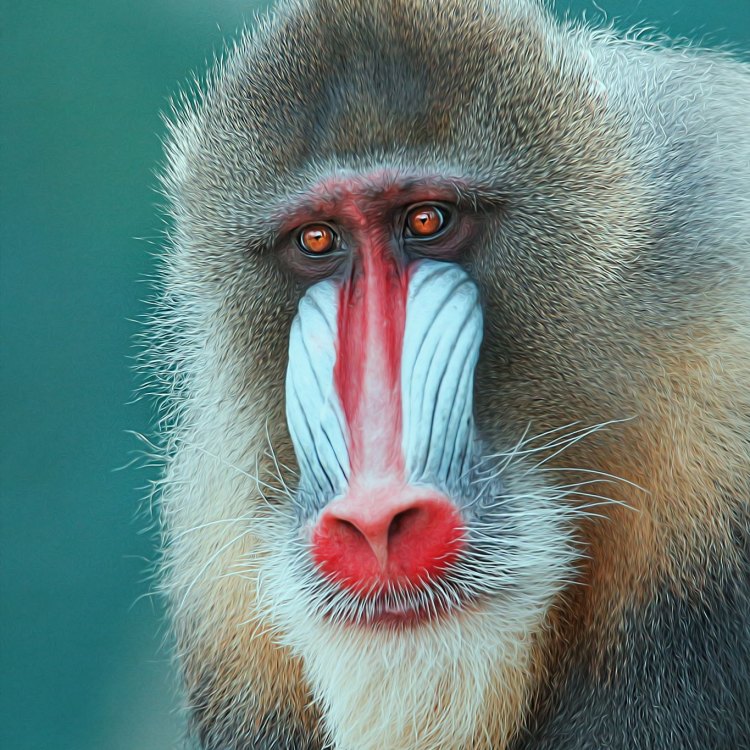
Mandrill
- Adult Size: 60 to 95 cm (23.6 to 37.4 inches)
- Average Lifespan: 20 to 30 years
- Reproduction: Sexual
- Reproductive Behavior: Mating season occurs once a year
- Sound or Call: Loud calls and vocalizations
- Migration Pattern: Non-migratory
- Social Groups: Groups called troops
- Behavior: Semi-terrestrial and diurnal
- Threats: Habitat loss, deforestation, hunting
- Conservation Status: Vulnerable
- Impact on Ecosystem: Seed dispersers
- Human Use: Hunted for bushmeat and threatened by illegal trade
- Distinctive Features: Elaborate facial coloring, long canine teeth
- Interesting Facts: Mandrills are the largest species of monkey and have one of the most colorful faces among primates. They live in large social groups and are known for their loud calls and vocalizations.
- Predator: Leopards, African pythons
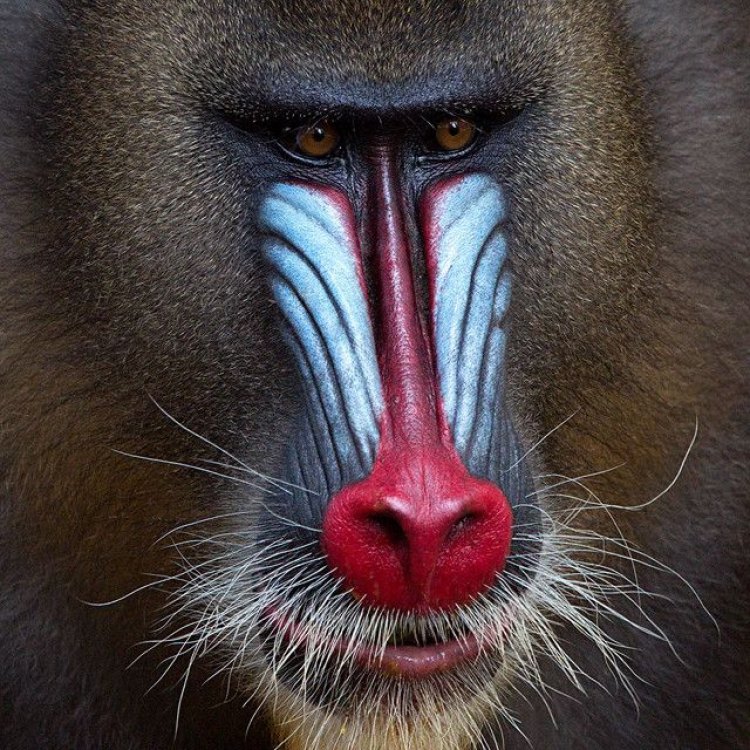
Mandrillus sphinx
The Colorful and Mighty Mandrill: An Endangered African Primate
Deep in the dense, lush forests of Central and Western Africa lives a magnificent and colorful primate known as the mandrill. With its vibrant face and impressive size, this species of monkey is truly a sight to behold. However, despite its striking appearance and fascinating behavior, the mandrill is facing numerous threats and is currently listed as a vulnerable species. In this article, we will take a closer look at the unique features and characteristics of the mandrill, while also delving into the challenges it faces and its important role in the ecosystem PeaceOfAnimals.Com.An Impressive Appearance
One of the most distinctive and captivating features of the mandrill is its unique and elaborate facial coloring. The male mandrills have vibrant red and blue stripes on their muzzle, while the females have shades of gray and brown. These colors become even more vibrant during times of arousal or excitement, making them stand out even more in the forest. This striking coloration is thought to play a role in sexual selection, with females preferring males with more colorful and elaborate faces.Mandrills are also the largest species of monkey, with an adult size ranging from 60 to 95 cm (23.6 to 37.4 inches). They have long, powerful arms and legs, and both males and females have long canine teeth. These teeth are used for display during social interactions and for defense against predators Manatee.
Social Creatures
Mandrills are highly social creatures and live in large groups called troops, which can consist of up to 200 individuals. These troops are made up of both males and females, with a dominant male leading the group. The females and their young form strong bonds within the troop, and the males compete for dominance and mating rights.The social structure of mandrill troops is complex and dynamic. Individual mandrills have been observed switching groups, with some males forming alliances to overthrow the dominant male in a group. These complex social interactions and relationships make the mandrill a fascinating species to study.
Communicative Calls
One of the most unique and characteristic features of mandrills is their loud calls and vocalizations. These vocalizations serve a variety of purposes, from communication within the troop to warning signals for potential threats. During mating season, which occurs once a year, the calls and vocalizations become even more intense as males compete for mates.Aside from their vocalizations, mandrills also communicate through body language and facial expressions. Their colorful faces serve as a visual display of their mood and social status within the troop.
A Semi-Terrestrial, Diurnal Lifestyle
Mandrills are primarily found in tropical rainforests but can also inhabit gallery forests and mountainous areas. They are considered semi-terrestrial, meaning they spend both their time on the ground and in trees. They are diurnal creatures, which means they are active during the daylight hours and rest at night.Their diet consists of a variety of fruits, nuts, seeds, and insects, which they forage for on the forest floor and in treetops. Their semi-terrestrial lifestyle allows them to play an important role in the ecosystem as seed dispersers, aiding in the growth and diversity of plant species.
Threats to Survival
Despite their impressive appearance and interesting behavior, mandrills are facing numerous threats to their survival. The primary threat comes from habitat loss and deforestation as a result of human activities such as logging and farming. This has led to a decline in their natural habitat, leaving them vulnerable to predators and reducing their food sources.Another major threat to mandrills is hunting. They are hunted for bushmeat, which is a source of protein for many local communities, and they are also threatened by illegal trade for their colorful fur and body parts used in traditional medicine.
A Vulnerable Species
Due to these threats, the mandrill population has significantly decreased, and they are currently listed as a vulnerable species by the International Union for Conservation of Nature (IUCN). The exact number of mandrills in the wild is unknown, but it is estimated that their population has declined by more than 30% over the past three decades.Conservation efforts are being made to protect the remaining mandrill populations and their habitat. These efforts include promoting sustainable forestry practices, educating local communities about the importance of preserving the mandrill, and implementing stricter laws and regulations against hunting and illegal trade.
An Important Role in the Ecosystem
As mentioned earlier, mandrills play a crucial role in the ecosystem as seed dispersers. They consume a variety of fruits and nuts, digesting the seeds and dispersing them throughout the forest in their feces. This helps to maintain a healthy and diverse forest ecosystem.Furthermore, as part of the primate family, mandrills are also vital in maintaining the balance of the food chain. They serve as prey for predators such as leopards and African pythons, helping to control their populations and prevent overpopulation.
Humans and the Mandrill
Despite their important role in the ecosystem, humans have had a significant impact on the mandrill population. Hunted for their meat and threatened by illegal trade, these majestic primates are at risk of extinction if conservation efforts are not successful.It is essential for humans to understand the value of the mandrill and its role in the ecosystem. By promoting responsible and sustainable practices, we can help protect the mandrill and ensure its survival for generations to come.
Fascinating and Threatened
In conclusion, the mandrill is a fascinating and threatened species of primate. With its vibrant face, impressive size, and complex social behaviors, it is truly a unique animal. However, it is facing numerous threats to its survival, and it is crucial for humans to take action to protect this vulnerable species. By understanding the importance of the mandrill and its role in the ecosystem, we can work towards a future where these majestic creatures can thrive in their natural habitat. It is up to us to ensure that the colorful and mighty mandrill does not disappear from our planet.
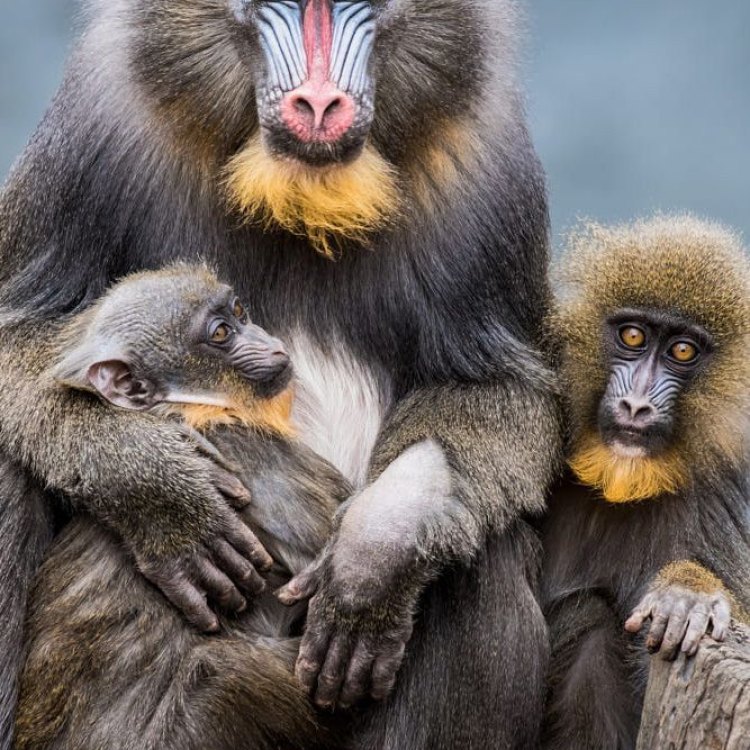
The Colorful and Fascinating World of Mandrills
Disclaimer: The content provided is for informational purposes only. We cannot guarantee the accuracy of the information on this page 100%. All information provided here may change without prior notice.

